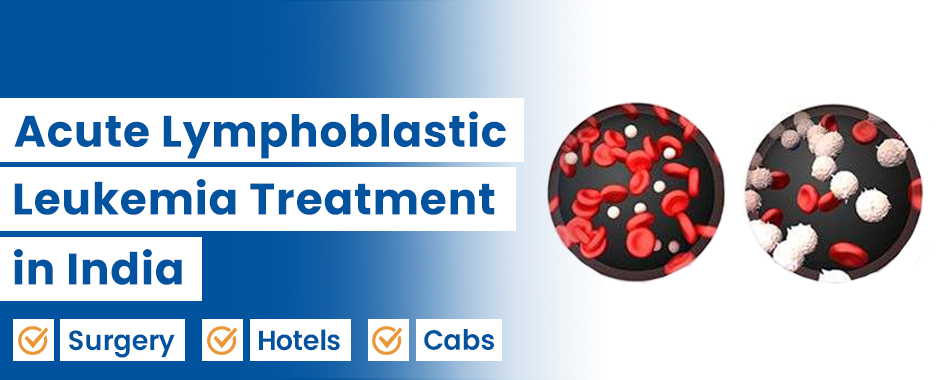

Africa is plagued by so many difficulties in providing proper healthcare, and leukemia is one of those diseases. However, there are not enough hospitals, equipment, or doctors trained in areas where Acute Lymphoblastic Leukemia is treatable. Due to the reasons, many have no choice but to travel to other countries for treatment.
Advanced acute lymphoblastic leukemia Treatment in India is popular. The hospitals are developed with modern technology, expert doctors, and efficient care at an affordable cost. Patients from Africa come to India because India has the confidence of quality treatment. Better facilities and correct diagnosis make patients believe that they can recover in India.
However, some countries in Africa, such as Ghana, Ethiopia, Tanzania, Congo, Uganda, and Eswatini, are improving their healthcare services, though there is slow progress. Investment and support are needed more to enable African countries to build strong health systems.
Acute Lymphoblastic Leukemia is a blood cancer that grows fast and must be treated right away. So, it is no surprise that India is known in the world for some of the best treatments for this disease. India has hospitals that use tools and doctors who work hard for people’s recovery. Doctors use modern machines to test and diagnose, enabling them to find the disease early and also plan the best treatment.
Another thing about getting acute lymphoblastic leukemia treatment in India is that it is cheaper when compared to other countries. Although it’s cheap, the care is extremely high quality. Tremendous patients from all over the world come to India for the treatment. Doctors here not only care for both the medical and the emotional needs of patients, but they do it well. India is giving hope to people affected with Acute Lymphoblastic leukemia with skilled doctors, new technology, and lower cost!
Acute lymphoblastic leukemia starts with a change in a stem cell in the bone marrow. This is a change in a normal cell becomes a leukemic cell called a mutation. Leukemic lymphoblasts are normal lymphoblasts that have become abnormal and multiply rapidly to produce many. These cells don't work properly and prevent healthy blood cells from being made. As a result, this can be associated with problems such as anemia (low red blood cells), neutropenia (low white blood cells) thrombocytopenia (low platelets). Fatigue, infections, bruising, or bleeding result from these conditions.
Some Acute lymphoblastic leukemia causes may increase your risk. While these are inherited, some rare genetic conditions, such as Down’s syndrome or Fanconi anemia, slightly increase the risk. Also, if you've had previous chemotherapy or radiation therapy, the risk is very small, but in comparison, very small compared to what you stand to gain from cancer treatment. High-energy radiation can damage cells and increase leukemia risk after radiotherapy and other treatments.
Having these risk factors does not mean you will have ALL. A lot of cases just aren’t apparent. Learning what causes acute lymphoblastic leukemia better helps researchers better develop cure for acute lymphoblastic leukemia.
Acute Lymphoblastic Leukemia is a fast-growing blood cancer. It affects cells in your body that fight infections. There are three main types of ALL that doctors divide into to determine what the best Acute Lymphoblastic Leukemia Treatment for you will be.
Precursor B cell ALL is the most common type, with approximately 60% of ALL patients in the US diagnosed with this subtype. First, it begins in B cells, your body's 'gunfighters' that make antibodies to fight off germs. Most of these types harm children and make their immune systems weaker.
Precursor T Cell ALL is the second type. The third type begins in T cells, which can help B cells work better. It is more frequent in young adults and men.
Mature B Cell ALL is the third type. The germ is very fast spreading and the germ is due to genetic changes. Treatments are available early; you can feel better sooner.
ALL can make you feel very sick. This is because your body has too many unhealthy white blood cells and not enough healthy ones. The possible Acute lymphoblastic leukemia symptoms are:
Even if you don’t, you may feel tired all the time. Your body has too few red blood cells to carry oxygen, so it won’t. You might get short of breath or really notice how pale your skin is.
You may bruise easily, or you may bleed more easily, even from small cuts. Brushing teeth may cause your gums to bleed. These tiny red or purple spots on your skin which sometimes stay for a minute or two and are called petechiae.
You may get more colds or infections, and their fevers may last longer. You don’t have enough healthy white blood cells around to fight germs.
Sometimes, you will even be in pain in the bones or joints. Swollen lumps in your neck, armpits, or groin might be a sign you’ve noticed too.
Or you may end up dropping pounds without trying or find yourself so full soon after a meal. If you have any of these symptoms, go for a doctor’s checkup. You may feel better early on!
Your doctor will run some tests to find out if you have Acute Lymphoblastic Leukemia (ALL). The first test is a blood test known as a Complete blood count (CBC). It is a test that measures the number of red blood cells, white blood cells, and platelets in your blood. The doctor might need to take a small sample of your bone marrow if the results reveal something unusual. A bone marrow biopsy is when the doctor removes a small sample of the material found in the bone marrow.
Your doctor will also do an extra Acute lymphoblastic leukemia diagnosis to try to determine if the leukemia cells have any special markers. These tests can tell doctors what type of ALL you have and how to treat it. Your doctor will continue to run the tests to know what kind of treatment will suit your Acute Lymphoblastic Leukemia after all the tests. It’s important to pass these tests so you know you’ll get the care you need.

CureIndia will help you connect with the leading specialists for acute lymphoblastic leukemia treatment in India. Our experienced haematologist-oncologists at CureIndia are experts in diagnosing and treating ALL, providing personalised treatment plans that include chemotherapy, targeted therapy, and stem cell transplants. CureIndia offers comprehensive care, from precise diagnosis and treatments to post-treatment support. Let's hear from the leading acute lymphoblastic leukaemia specialists in India:




The cost for ALL treatment in India is very affordable, starting from $6,000. The treatments performed here are of top quality, performed by hematology specialists utilising the most advanced tools. This cost is lower than in many Western countries, making it a preferred option for many families.
| Treatment Name | Cost in India | Stay in India |
|---|---|---|
| Immunotherapy for ALL Treatment in India | $15,000 | 2 Months |
| Chemotherapy for ALL Treatment in India | $6,000 - $7,000 | 2 Months |
| Bone Marrow Transplant for ALL Treatment in India | $25,000 - $30,000 | 2 Months |
If you have Acute Lymphoblastic Leukemia, doctors can use different treatments to defeat the cancer. Who gets treatment and how depends on how old you are, how healthy you are, and whether you have one type of ALL or another. Here are the options for acute lymphoblastic leukemia Treatment in India:
Chemotherapy is the most common acute lymphoblastic leukemia Treatment in India. The treatment uses medicine that is especially strong and can kill or prevent cancer cells from growing. The medicine can come in different ways. Your doctor might give you the medicine directly into the fluid around the brain if the cancer spreads to the brain or spine.
Another treatment is radiation therapy. Special rays for killing cancer cells are used, especially if it has spread to the brain or spinal cord.
Sometimes, doctors suggest a stem cell transplant. The treatment replaces the damaged blood cells with good ones. It is important to help the body make new blood cells, so it may be able to fight off infections.
Doctors may also be using new treatments, such as targeted therapy or immunotherapy, which attacks the cancer cells directly. Some people will join a clinical trial to try the new treatment to see if it works for them. Acute Lymphoblastic Leukemia Treatment is trying to help someone feel better and live a healthy life.
ALL is a serious cancer, but the good news is that it is treatable. And real good treatment identifies and knocks out the enemy. The five-year Acute lymphoblastic leukemia survival rate is 68.8%. Kids under 10 usually take treatment better than anyone else. Also how well a person responds to treatment matters the type of ALL. For many people, early diagnosis and sound treatment mean they survive longer and better after they finish ALL treatment.
